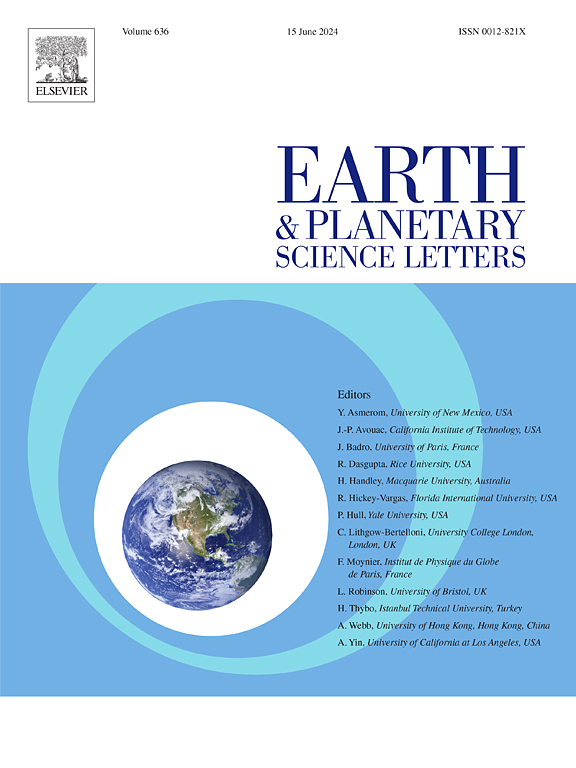Earthquake-triggered submarine canyon flushing transfers young terrestrial and marine organic carbon into the deep sea
IF 4.8
1区 地球科学
Q1 GEOCHEMISTRY & GEOPHYSICS
引用次数: 0
Abstract
Submarine canyons transfer substantial amounts of sediment and organic carbon (OC) into the deep ocean, nourishing deep-sea ecosystems and contributing to the global carbon cycle through OC burial and sequestration. Tracking lateral OC transport through submarine canyon systems is challenged by the deep-ocean setting, difficulties with constraining episodic depositional events, and the need to assess the composition and age of marine and terrestrial organic matter. We apply innovative parallel ramped pyrolysis oxidation-accelerator mass spectrometry and pyrolysis-gas chromatography-mass spectrometry with isotope analyses to track OC age and sources in the 2016 Kaikōura earthquake-triggered, canyon-flushing event that deposited along >1300 km of a submarine canyon-channel system, offshore Aotearoa New Zealand. Specifically, these techniques allow us to determine the ages, sources, and partitioning of OC within the Kaikōura turbidite deposit and test hypotheses of how submarine canyon systems contribute to lateral OC flux and burial. Our results show that, despite considerable canyon floor erosion, substantial amounts of young OC were flushed into the deep sea, with relatively little (∼2 %) pre-Holocene OC contributions. Even without a direct connection between rivers and submarine canyons, most (∼55 %) of the OC in the Kaikōura event bed is from terrestrial sources. However, the deposit also contains substantial amounts (∼22 %) of marine-derived OC and ∼23 % of the material is of unassignable origin. Particle sorting imparts variability on the age and composition of OC within turbidite deposits and along the turbidity current flow path. Terrestrial-derived OC is preferentially older than marine-derived OC and concentrated in coarser particle sizes found more commonly at the deposit base and in proximal settings. Young, marine-derived OC is concentrated at the surface of the deposits and tends to be enriched in finer particle sizes. Such OC partitioning in turbidites supports the relevance of depositional models for predicting and quantifying distribution of OC in deep-sea deposits. Earthquake-triggered, canyon flushing events and resulting turbidites enhance OC burial efficiency and can sequester OC effectively, contributing an important carbon sink to the sedimentary carbon cycle.
求助全文
约1分钟内获得全文
求助全文
来源期刊

Earth and Planetary Science Letters
地学-地球化学与地球物理
CiteScore
10.30
自引率
5.70%
发文量
475
审稿时长
2.8 months
期刊介绍:
Earth and Planetary Science Letters (EPSL) is a leading journal for researchers across the entire Earth and planetary sciences community. It publishes concise, exciting, high-impact articles ("Letters") of broad interest. Its focus is on physical and chemical processes, the evolution and general properties of the Earth and planets - from their deep interiors to their atmospheres. EPSL also includes a Frontiers section, featuring invited high-profile synthesis articles by leading experts on timely topics to bring cutting-edge research to the wider community.
 求助内容:
求助内容: 应助结果提醒方式:
应助结果提醒方式:


